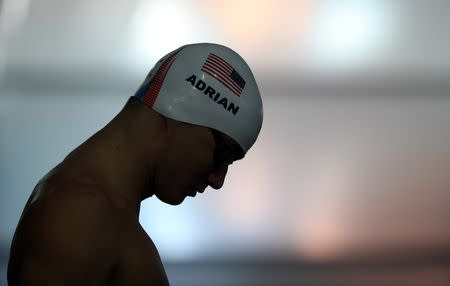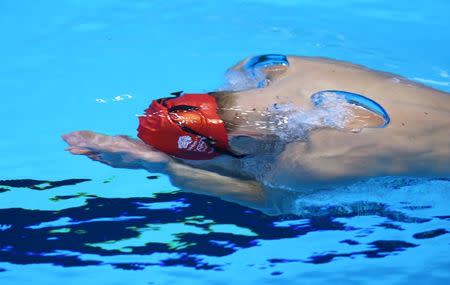Swimming - Want to go faster? You may need your head seeing to
By Alan Baldwin RIO DE JANEIRO (Reuters) - Fancy slipping into some fast fabric and gliding into the water like an Olympic swimmer? Then maybe you also need a hair management system and a cap that stands up on its own like a goldfish bowl. Perhaps make that two caps. In fact, you probably need your head seeing to and not just because some say the real battlefield in the post-bodysuit era is now mostly psychological. The world's best swimmers will race in the Rio Olympic pool from Saturday and so too will the biggest swimwear brands, eager to impress an audience of a billion potential customers with their products. The designs will be flashy, aimed to catch the eye of consumers, but the swimmers themselves will be much more the centre of attention. The technicians, meanwhile, have had to go back and seek marginal gains wherever they can and starting at the top. The head. As Rob Johnson, brand manager for Speedo Fastskin, told Reuters, a swimmer's head performs a similar function to the front wing on Lewis Hamilton's Formula One car. "The most important bit of a Formula One car is actually the front wing...because the flow over the rest of the car is so important," he said. "And it’s the same with the swimmer." The cap and goggles, and how the water flowing around the head interacts with the swimsuit material and design, is one area under increasing scrutiny. "If you think about a swimmer like a Formula One car, you can best help them with surface flow around the head -- over the goggles and then on to the rest of the body," Johnson said. "Those tiny changes in vortices...have an accentuated effect down the rest of the body." Speedo, and rivals adidas among others including Italian brands Arena and Michael Phelps's supplier Aqua Sphere, have carried out head-scanning of hundreds of swimmers, paying particular attention to the fit and shape of the cap. "Our cap you can actually turn inside out and it will go like a fishbowl, it will stand on its own," said Johnson, proudly showing that to be the case. "A lot of caps on the market were moulded before, and round. And actually your head isn’t round, it’s more of an oval." RIPPLE EFFECT Watch the opening heats of the Olympics and there will be some swimmers who fasten their goggles around the outside of the cap. But doing that creates a negative ripple effect that can affect performance in a sport where athletes shave down and races are often won by a whisker. Double-capping, wearing an inner cap to secure the outer one, is common. "We have a hair management system which is made out of fabric, which can sit underneath the cap to make it more sticky," Johnson said. At the 2008 Beijing Games where non-textile buoyancy- enhancing bodysuits allowed swimmers to feel like they were going downhill, the focus was all on the garment. Speedo's LZR Racer was introduced in February that year and by the time the Games came around, 38 world records had been smashed. The technological race divided the sport and led to "swimsuit wars" with governing body FINA outlawing the suits after the 2009 world championships in Rome. Records have been broken since then, more on the women's side than the men's. That may be due also to the fact that there is more material to play with on a female swimsuit. The latest versions of men's 'jammers' -- suits that go from the waist to the top of the knee -- all use so-called fast fabrics. The makers hope theirs will be the ones that have other swimmers casting envious looks across the pool. "We built a breaststroke specific suit that would really enable breaststrokers to swim faster," adidas's 'head of future' Deborah Yeomans told Reuters. That suit has kinetic bands on the inside of the thighs so that when breaststrokers kick out, the bands stretch and help bring the legs together faster. Speedo have their LZR Racer X, which they say offers a higher level of localised compression and is the result of 10,000 hours of development work, and LZR Racer Elite2 with a more general effect. Both have seams that act like the K-tape physiotherapists might put on an athlete to correct body position, with an X across the back of the women's suits. "The fundamentals of fast fabrics, fast finishes...there are slight fractions of a second (to be gained) which these guys are after in order to win their medal," Johnson said. "But again, it’s not just about the suits these days. It’s all the elements around it. "It’s psychology and nutrition and injury prevention. All those incremental gains add up." (Editing by Ed Osmond)

 Yahoo Sport
Yahoo Sport 







































